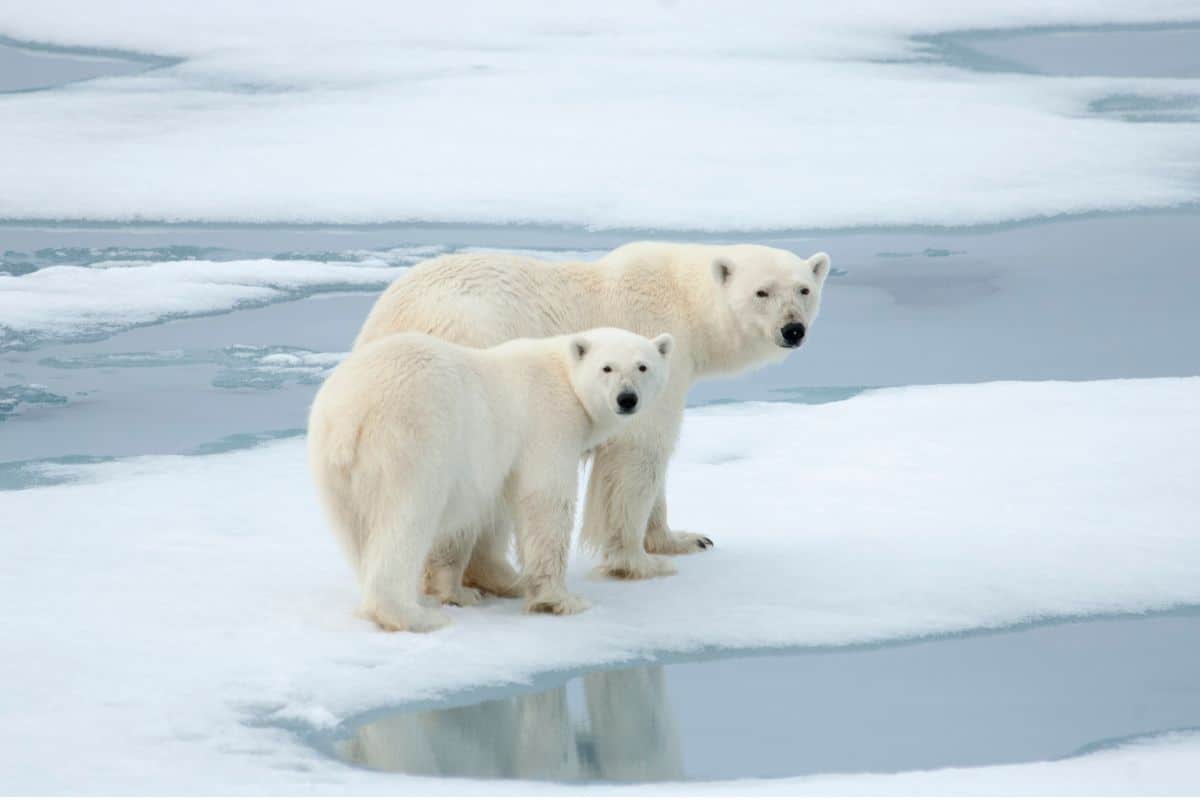
They are genetically very different from polar bears elsewhere on the planet and can survive in the absence of sea ice.
Scientists have discovered a previously unknown subpopulation of polar bears in remote and isolated areas of southeastern Greenland. It’s a promising find. Unlike their well-known cousins, these polar bears seem to thrive in the absence of sea ice. And with the Arctic warming at an alarming rate and sea ice languishing, this subpopulation shows that some polar bears may still be able to cope with climate change.
genetically different
The researchers actually tracked down the new subpopulation by accident. “We wanted to investigate Southeast Greenland because we didn’t know much about the polar bears there,” said lead author Kristin Laidre. “But we never expected a new subpopulation to live there.” The team found that the polar bears are genetically significantly different from the polar bears elsewhere. “They are the most genetically isolated population of polar bears anywhere in the world,” said study researcher Beth Shapiro. “We know that this population has been separated from other polar bear populations for at least several hundred years and has been in small numbers ever since.”
The researchers suspect that about a few hundred polar bears live in Southeast Greenland. The polar bears live isolated from the rest because they are boxed in on all sides: by the sharp peaks and the enormous Greenland ice sheet in the west, the open waters of the Denmark Strait in the east, and by the fast-flowing East Greenland Current that flows southwards. runs along the east coast of Greenland. Body measurements also suggest that adult females are slightly smaller than polar bears elsewhere. They also have fewer young, possibly due to the challenge of finding a mate in the rugged landscape of fjords and mountains.
The discovery of the new subpopulation of polar bears is promising. Scientists are very concerned about the Arctic; a region that is warming twice as fast as the rest of the earth. And of all the animals that live here and are threatened by climate change, polar bears are the most vulnerable.
The diet of polar bears
Why? Especially because the diet of polar bears consists mainly of seals. And those seals can only get hold of the polar bears from sea ice, which is melting at breakneck speed these days. Because sea ice decreases much more than normal during the summer, the polar bears are forced to leave the sea ice and flee to land. However, there is nothing to gain. It means that polar bears eat less and as the Earth warms, they are unable to ingest any food at all for longer and longer periods.
Special
But the polar bears in Southeast Greenland are ‘special’. Because observations show that, unlike other polar bears that travel far across sea ice to hunt, the bears in Southeast Greenland spend much more time on relatively small pieces of mainland. They walk over ice in protected fjords and scramble over mountains to reach neighboring fjords. The fact that they live so well on land is mainly due to the fact that there is actually very little sea ice in the region. They only have access to sea ice for four months, from February to the end of May.

The blue line are polar bears that live in northeastern Greenland. They travel long distances across sea ice to hunt. The red lines represent the newly discovered subpopulation. These polar bears stay much closer to home, moving only in their own or neighboring fjords. Image: Laidre et al./Science
So how do they hunt seals? To do this, they rely on a different strategy: they hunt seals from chunks of freshwater ice that break off the Greenland ice sheet near glaciers opening into the sea.
Other strategy
It means that these platforms allow polar bears to hunt seals all year round. So while other bear populations have to move onto land during the ice-free season or migrate to less productive polar regions with receding sea ice, the special adaptation of Southeastern Greenland’s polar bears allows them to live in an otherwise inhospitable place. “This new population gives us some insight into how the species might survive in the future,” said Laidre.
Glimpse of the future
The findings offer hopeful insight into polar bears’ resilience in the face of the warming climate. “In a sense, these bears give a glimpse of how Greenland bears will thrive in future climate scenarios,” Laidre says. “Sea ice conditions in South East Greenland today resemble what was predicted for North East Greenland at the end of this century.”
The fact that bears can survive in southeast Greenland suggests that glaciers that open into the sea may be places where some polar bears manage to survive. Especially if the sea ice floating on the ocean continues to decrease in the future. But we should not celebrate too soon. “If you’re concerned about the conservation of the species, our findings are hopeful,” Laidre said. “I think they show us how some polar bears can survive despite climate change. But I don’t think glaciers will house huge numbers of polar bears. There just aren’t enough. In addition, such glaciers are not found in most of the Arctic. We still expect a large decline in polar bear numbers if climate change continues unabated.”
Source material:
† Newly documented population of polar bears in Southeast Greenland sheds light on the species’ future in a warming Arctic” – University of Washington